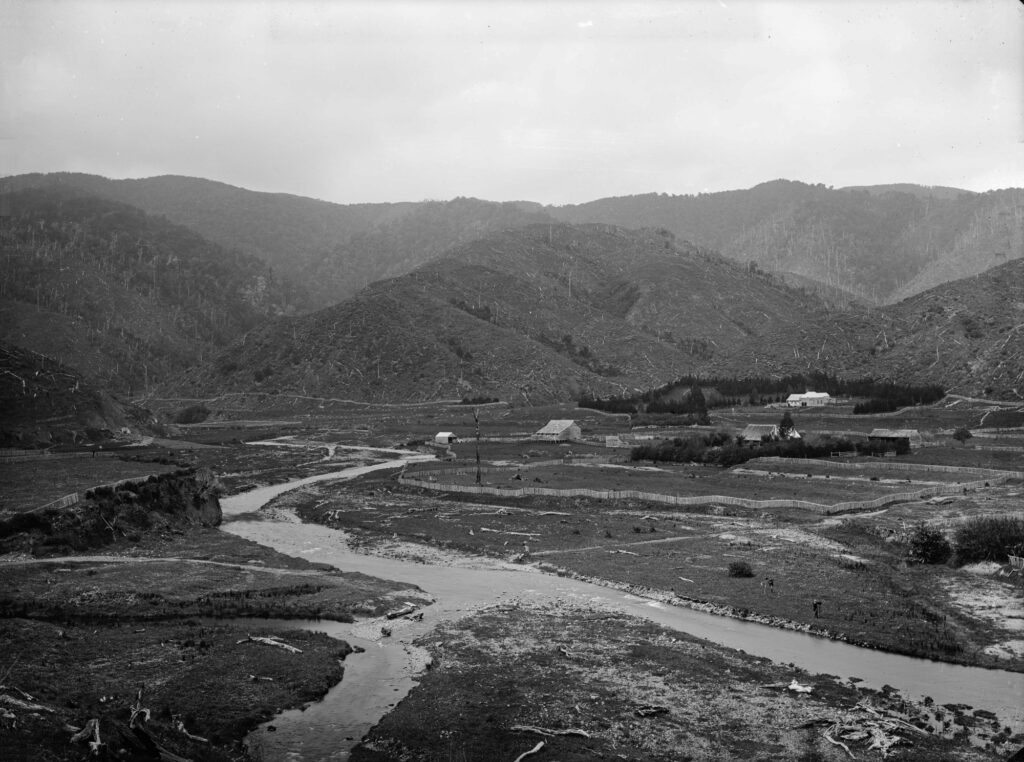Early migration to Wainuiomata was spearheaded by logging activities that opened up the valley for farming.
The initial influx of settlers to Wainuiomata was propelled by logging endeavours, paving the path for agricultural activities in the cleared regions. The harvested wood was used for housing in Wellington.
The first major industry in Wainuiomata was logging, soon followed by farming. After clearing trees from the valleys and gullies, settlers planted grass to create pastureland. During the logging era, felled trees were cut into logs and transported by bullock teams and tramway tracks to mills located in Moores Valley, Coast Road Valley, and over the ridge in Naenae. The timber was primarily used for building houses in the Wellington region and other projects. The logging process involved the use of tramways, bullocks, and horses, yet it remained a labour-intensive endeavour. Early settler families, such as Prouse and Sinclair, played a significant role in the logging efforts and clearing of land in Wainuiomata.
Today, aside from large expanses of farmland and regenerating bush on hillsides, there are still visible reminders of the suburb’s logging history. These include cut pathways down hillsides and old forestry tracks such as Sledge Track. Nearby Reservoir Road traces the route of the main trunkline, which was operated by the Sinclair family.
Prouse Family
The Prouse family undertook logging in the Coast Road valley as early as 1853. James and Richard Prouse established their sawmilling operations along the Coast Road in Wainuiomata, situated roughly 5 km south of The Village. Richard Prouse Senior built the old church in the same valley, predominantly utilizing totara wood harvested from the surrounding area.
Sinclair Family
In the 1850s to 1880s, the Sinclair family undertook logging operations in the Homedale area, encompassing what is now, Moores Valley Road, Hine Road, Sunny Grove, and Reservoir Valley (then known as Sinclair Valley). Their sawmill situated at the junction of Whitcher Grove and Moores Valley Road, received logs via a railway / tramway system. The Sinclair family had intentions to log the current water catchment area too. However, a deal was put in place to keep to halt logging in that section of Sinclair Valley to safeguard it for water collection purposes. This foresight has meant the catchment area today is one of the best places for old growth forest in the southern North Island. There is even a proposal to use this land as a wildlife sanctuary.
Strand Brothers
From at least 1906, the Strand Brothers had a tramway that took logs harvested in upper Moores Valley. an area overlooked by other loggers such as the Sinclair family. A winding engine was positioned atop a saddle where it hauled logs from the floor of upper Moores Valley on one side and then lowered down to a mill near Rata Street in Naenae. Further tram-lines extended deep into the bush, branching off from what was considered the “main trunk”. These tracks were scattered based on a pattern of where trees were cut and where trees were to be cut next. Remnants of the old tramway remain hidden within the regenerating bush in Naenae and Wainuiomata including the chute or cut track and well as some cables, bottles, and some metal artefacts.
Tramways
Bush tramways used for logging in Wainuiomata were vital to the local timber industry in the 19th and early 20th centuries. The area’s dense forests made it an ideal location for sawmilling operations to supply timber to Wellington and Lower Hutt. Narrow-gauge railways were constructed to transport logs from remote, rugged forests to sawmills, navigating challenging terrain like valleys and ridges that would have been difficult for horse-drawn wagons. Initially, wooden rails and horse-drawn wagons were used to minimize costs, a common practice before mechanized transport improved the efficiency of logging operations.


